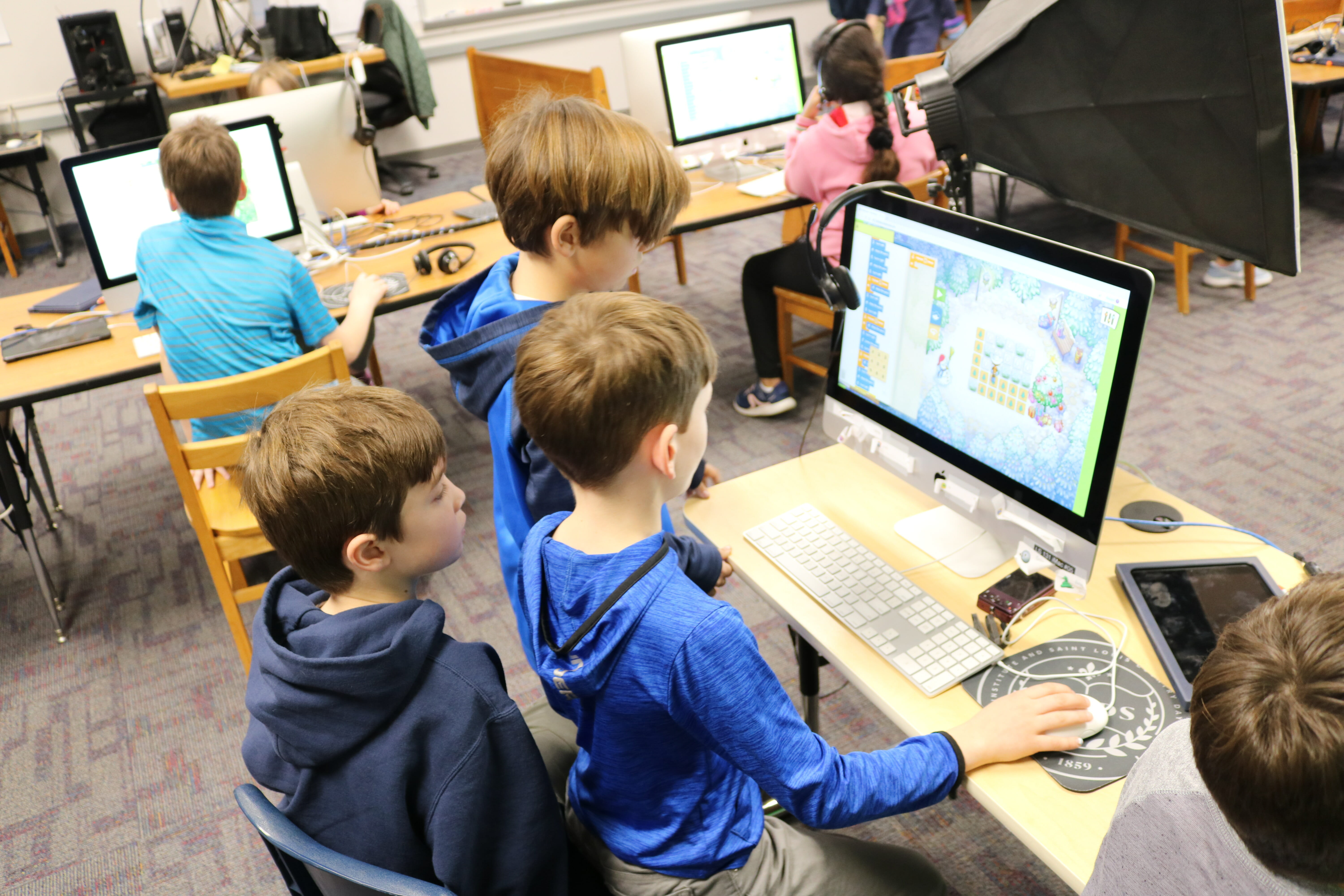This week, educators and students throughout the nation and throughout the world engaged in computer science fun during Computer Science Education Week, held each December. Hour of Code is an annual worldwide event that increases awareness and accessibility of coding curricula for all students. Here at MICDS, coding enthusiasts of all ages took that charge and raised it up a notch as they dug into various coding projects.
In the Middle School, our 8th grade chemists used the popular game Minecraft to learn about the elements and basic properties of matter. Minecraft Education Edition is a game-based learning platform that promotes creativity, collaboration and problem-solving in an immersive digital environment. Students first studied the properties of matter and the periodic table in a classroom unit before jumping into the gaming world. After that “solid” preparation, students were ready to mine for elements and break them down in the Minecraft virtual world. Middle School Science Teachers Callie Bambenek and Michelle Hrastich spent many hours preparing this new, interesting learning experience. Bambenek shared, “The students worked in teams to explore and find elements, and they used their coding skills to improve their success rate. They used codes to mine faster, see in the dark and even teleport their partners to save them.” Even Head of School Jay Rainey got in on the game when he visited the classroom to observe the coding and chemistry expertise of our 8th grade scientists.
A couple of students shared their thoughts on the project. Kelly Zhao ’24 said, “I had never played Minecraft before, and it’s fun because while you’re mining in the game, really you’re exploring and learning about all of these elements and chemistry.” Willy Carpenter ’24 shared, “I definitely prefer learning the unit this way over worksheets and even lab work. While exploring the Minecraft world, I’m still learning the periodic table and the chemistry of how elements break down.”
In the Lower School, 4th graders participated in Hour of Code by solving puzzles in the LightBot app, while 3rd graders used Run Marco. Lower School Coordinator of Instructional Technology Greg Stevens said, “Each of these programs uses block coding to solve puzzles. Concepts include pattern recognition, repeat and loops and if/then logic. Strategies include taking the perspective of the character, solving a part of the puzzle at a time, testing and debugging. The apps appear simple at first and become increasingly difficult as the puzzles progress.”
If you are interested in testing your coding skills, the challenges are available online for free and don’t require any account setup. Our third and fourth graders may be able to help you if you run into a roadblock. They have solved all of these puzzles and moved on to harder challenges. No pressure!











